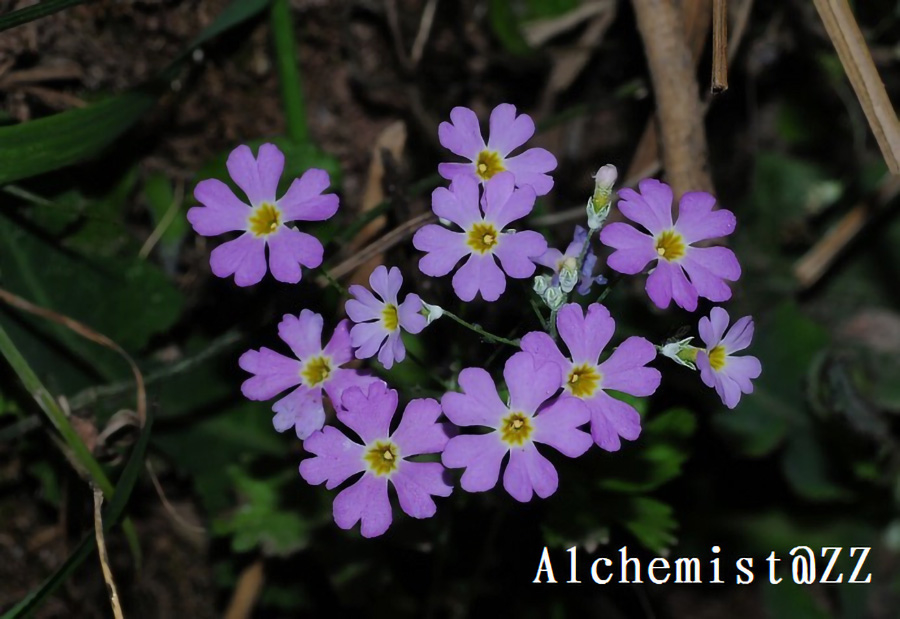- Scientific Name: Primula forbesii Franch.
- Ref: Bull. Soc. Bot. France. 33:64. 1886
- English Common Name: baby primrose
- Chinese Common Name: 小报春 xiǎo∙bàochūn
- Family: Primulaceae
- Genus: Primula
- Distribution: At margins of rice paddies, low hills; 1500–2000 m. SW Sichuan, C and NE Yunnan
- Photo: 04/05/2012, Mt. Cang, Yunnan
Herbs biennial, with numerous fibrous roots. Leaves usually numerous; petiole 1--3(--5) cm, narrowly winged, with multicellular white hairs; leaf blade oblong to elliptic or ovate-elliptic, 1--3.5 X 0.5--2.5 cm, abaxially sparsely minutely glandular and pubescent mainly along veins, adaxially sparingly pilose, base truncate to shallowly cordate, margin crenate-lobulate, apex rounded; lobes denticulate. Scapes 1 to many, 6--13 cm, sparingly pilose or glabrescent, farinose toward apex; umbels 1 or 2(or rarely 3 or 4), superimposed, 4--8-flowered; bracts lanceolate, 2.5--5.5 mm, ± farinose, apex acute. Pedicel 0.6--2 cm, elongating to 3 cm in fruit, glandular. Flowers heterostylous. Calyx campanulate, 3--4.5 mm, olive-green or yellowish green farinose, parted to middle; lobes triangular, apex acute. Corolla pink, rarely white; tube 4.5--5.5 mm; limb ca. 1 cm wide; lobes broadly obovate, emarginate. Pin flowers: stamens ca. 1.5 mm above base of corolla tube; style ca. 3 mm. Thrum flowers: stamens ca. 3 mm above base of corolla tube; style ca. 1 mm. Capsule globose, ca. 3 mm in diam. Fl. Feb-Mar, fr. Mar-Apr. 2n = 18@, 24@. (Flora of China)
